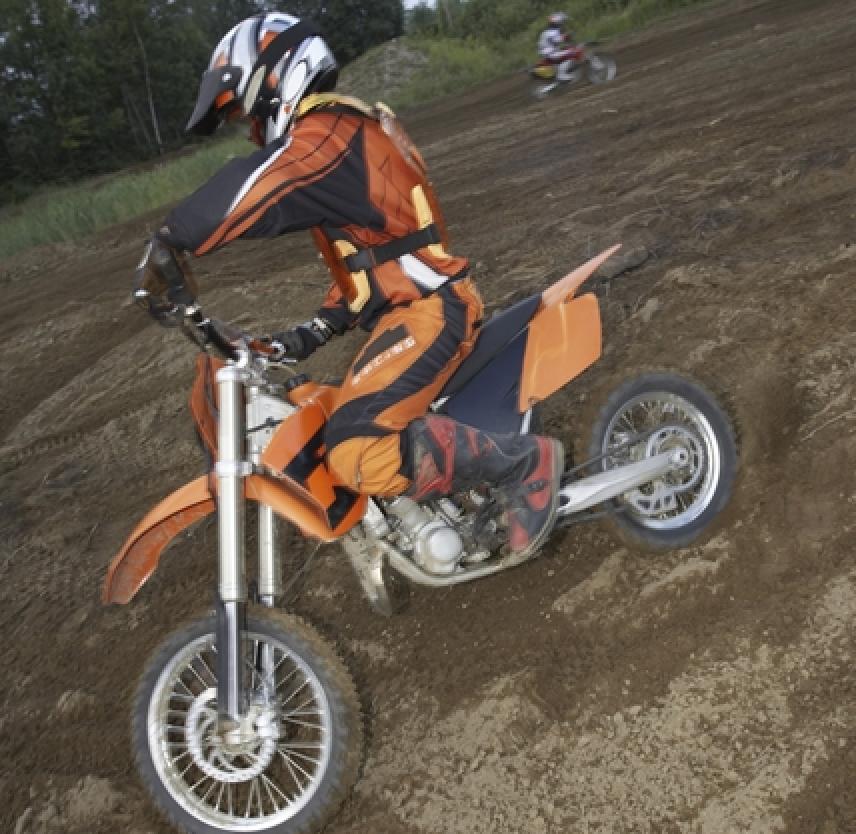
Children's Safety Network
Resources* on safe youth all-terrain vehicle (ATV) operation that health departments need to know.
What specific legal requirements are mandated by my state?
- State specific requirements, (click here to download PDF).
- “All-Terrain Vehicle Legislation for Children: A Comparison of a State With and a State Without a Helmet Law” The article concludes the importance of helmet use. Available at www.pediatrics.org.
What public policy recommendations exist for youth ATV users?
- The American Academy of Pediatrics ATV Policy statement outlines recommended age guidelines, http://aappolicy.aappublications.org/cgi/content/full/pediatrics;105/6/1352.
- The petition of the Consumer Federation of America to restrict ATV use by youth under 16 years, http://www.consumerfed.org/pdfs/atv_petition.pdf
- The American Academy of Orthopaedic Surgeons offers a position statement recommending age limits, http://www.aaos.org/about/papers/position/1101.asp.
What are the manufacturers’ recommendations for engine size for youth operators?
- Manufacturers recommend ATVs with an engine size of 90cc or greater for those 16 years and older; 70cc to 90cc for youth ages 12-15; and less than 70cc for ages 6-11.
What are guidelines for recreational use?
- The U.S. Consumer Product Safety Commission comments on where and how to ride an ATV, http://www.cpsc.gov/CPSCPUB/PUBS/540.html
- Rider safety tips on appropriate attire, trail etiquette, engine size, and where to ride, http://www.atv-youth.org/WorkArea/linkit.aspx?LinkIdentifier=id&ItemID=68
What safety equipment should be used?
- Safety tips for families, www.caringforkids.cps.ca/keepingkidssafe/ATV.htm.
- The ATV Safety Institute offers tips on rider training, gear, and a pre-ride checklist, www.atvsafety.org/.
- The right fit for an ATV helmet, http://4wheeldrive.about.com/cs/beginningatv/a/atvriderhelmets_2.htm.
What are the occupational guidelines?
- The North American Guidelines for Children's Agricultural Tasks were developed by the National Children's Center for Rural and Agricultural Health and Safety to assist adults in assigning farm jobs to youth 7 to 16 who live or work on farms. The guideline, “Farmwork with an ATV,” is available at https://nasdonline.org/static_content/documents/989/6.pdf
- The Farm Safety Series provides a summary of ATV farm hazards and steps to reduce ATV-related injury risk. The resource is available through WorkSafe Victoria, Australia, www.workcover.vic.gov.au/vwa/publica.nsf/
InterPubDocsA/AB748B16D114AB71CA256CFB00076682/$File/
/Farm_ATVs.pdf.
Where are training resources and opportunities available?
- To enroll in a Rider Course in your area contact ATV Enrollment Express at 1-800-887-2887 or go online at http://home.att.net/~atvsafety/. To contact an ATV Safety Institute representative for instructor licensing information call (949) 727-3727.
- The 4-H Community ATV Safety Program provides materials to learn to ride safely, www.atv-youth.org.
Where can I obtain injury data?
- Center for Disease Control and Prevention (CDC) WONDER website contains state off-road vehicle-related (all-terrain vehicles, snowmobiles, and hovercraft) mortality data using the International Statistical Classification of Diseases and Related Health Problems, tenth revision (ICD 10) codes (V86.0-V86.9), http://wonder.cdc.gov/.
- The U.S. Consumer Product Safety Commission, National Electronic Injury Surveillance System (NEISS) provides estimates of emergency department visits, www.cpsc.gov/LIBRARY/neiss.html. Codes for ATV-related injury data are 3285, 3286, 3287, and 3296.
- CDC’s Web-based Injury Statistics Query and Reporting System (WISQARSTM) is an interactive database that provides customized reports of transportation and other injury-related data, not specific to ATVs, www.cdc.gov/ncipc/wisqars/default.htm.
Where can I receive assistance with injury and cost data?
- “In My Back Yard” is a web-based directory to locate state injury contacts and organizations, http://www.marshfieldclinic.org/nfmc/pages/default.aspx?page=nccrahs_welcome/.
- CSN’s Economics and Data Analysis Resource Center (EDARC) assists in obtaining cost data and youth ATV-related injury data, www.edarc.org/.
In collaboration with private and public organizations, state health departments could:
Obtain Data and Evaluate Programs
- Evaluate and expand the opportunity of ATV safety training programs.
- Collect and monitor ATV-related injury data including use of personal protective equipment, time of day, surface type, ATV make/model, environmental conditions, alcohol and other drug involvement, and injury severity.
Be Proactive
- Consider the promotion of legislation in your state based on the American Academy of Pediatrics (AAP) model ATV legislation, http://aappolicy.aappublications.org/.
- Offer the facts on ATV-related injuries to local ATV clubs, media representatives and state organizations.
- Develop and promote safe ATV riding opportunities.
Work with Professionals
- Work with manufacturers to increase the safety of ATVs.
- Encourage interventions that are developmentally appropriate, community-based and on-going; and incorporate education, enforcement, and engineering strategies.
- Encourage health care providers to engage in anticipatory guidance about ATV safety.
- Establish and maintain a trauma system that is responsive to the off-road nature of the sport.
* The Children's Safety Network does not endorse specific resources, but offers these as examples.
This document can be downloaded from the Internet, www.childrenssafetynetwork.org. ATV safety materials also available are: ATV Safety Promoting Organizations, ATV Safety Programs: Best Practices, and ATV Safety Fact Sheet.
For more information:
Children’s Safety Network
Phone: 800-662-6900
nccrahs@mcrf.mfldclin.edu
www.childrenssafetynetwork.org
From the National Ag Safety Database, Centers for Disease Control and Prevention. www.cdc.gov/nasd.
